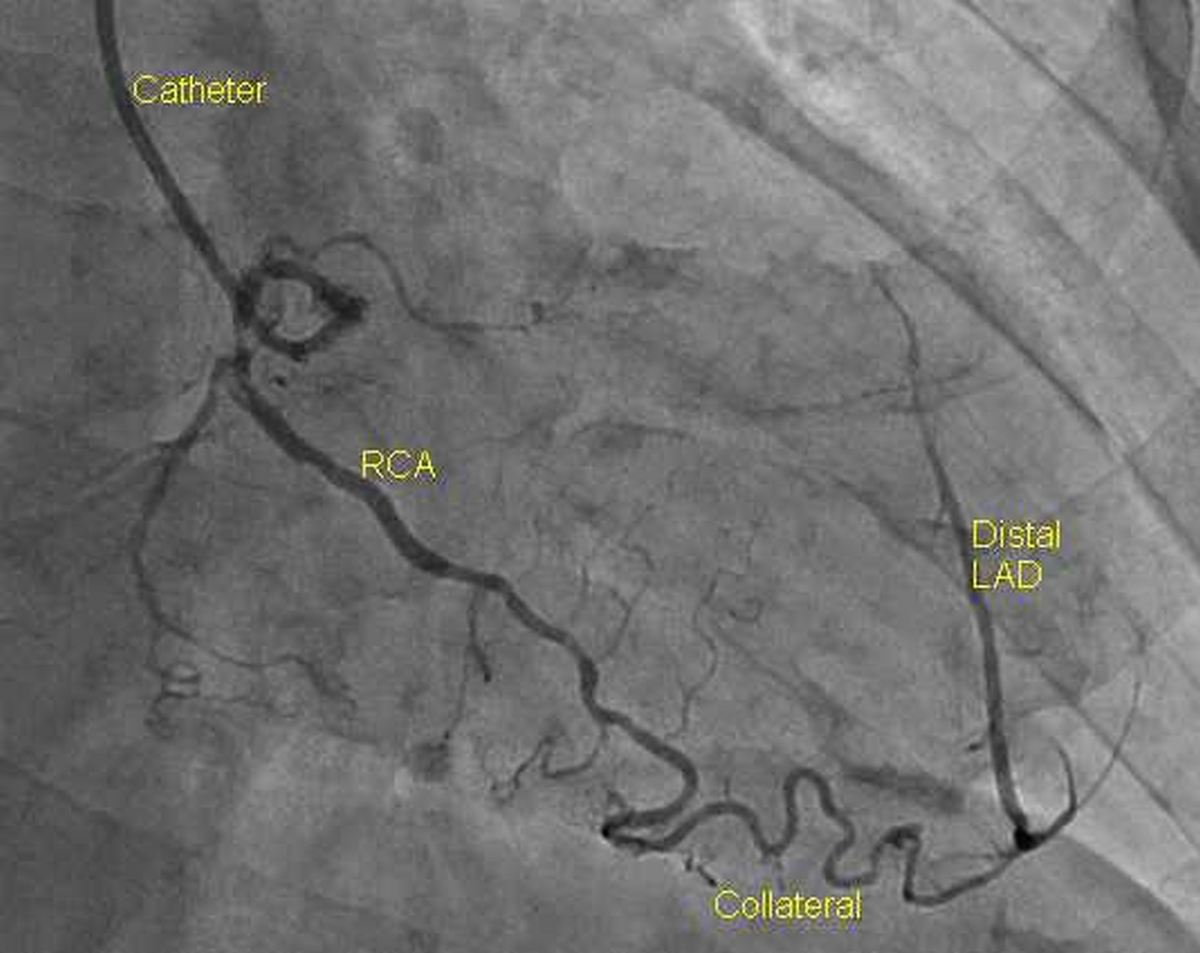Collaterals to distal LAD
Collaterals to distal LAD
Right coronary angiogram by transradial route showing a non dominant right coronary artery supplying collaterals to distal left anterior descending coronary artery. Proximal RCA has tandem tight stenosis, before the origin of the right ventricular branch, though not clearly visualised in this still shot. Collateral connecting RCA to LAD is a tortuous corkscrew like vessel.
Proximal LAD in this case has long segment diffuse disease starting from the ostium terminating in a chronic total occlusion. Distal LAD is a good sized vessel with no significant disease, fairly well filled from heterocollaterals. Collaterals from the same coronary territory are called homocollaterals and those from another territory are known as heterocollaterals.
Though minute coronary collateral vessels are present from birth, they develop only when a critical coronary narrowing or total occlusion develops. When an occlusion occurs quickly, there is hardly any time for enlargement of the tiny pre-existing collaterals and the myocardium in the territory supplied by the vessel undergoes necrosis. This leads to acute myocardial infarction.
When occlusion occurs after a slowly progressive disease, there is ample time for development of collaterals like this and myocardium supplied by the collaterals remain viable even after total occlusion of original vessel occurs. Collaterals can be used for retrograde approach of coronary intervention to recanalize chronic total occlusions [1].
Reference
- Choo GH. Collateral Circulation in Chronic Total Occlusions – an interventional perspective. Curr Cardiol Rev. 2015 Nov 6;11(4):277-284.